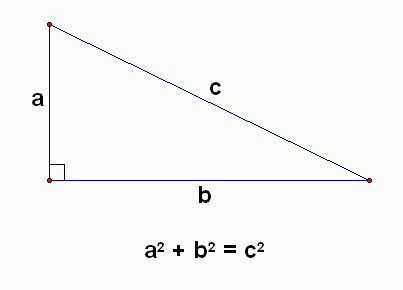Pythagorean Theorem Worksheet
Pythagorean Theorem states that the sum of the areas of the two squares on the legs (a and b) equals the area of the square on the hypotenuse (c). Pythagorean Theorem is only applicable for right angled triangle. The below worksheet help you to understand how to compute pythagorean theorem.
Definition:
Pythagoras is a Greek Mathematician he found a solution for solving right angle triangle. If a Triangle is measured as right angle triangle then the Square of hypotenuse is equal to sum of the squares of opposite side and adjacent side.

From the above Pythagorean equation,
To find a, a2 = c2 - b2
To find b, b2 = c2 - a2
To find c, c2 = a2 + b2
Example:
In above right angle triangle a = 3 and c= 5 means,
From Pythagorean theorem for right angle triangle
b2 = c2 - a2
b2 = 52 - 32
b2 = 25 - 9 = 16
b = 4
Hence the value for side b is 4.
When you try such calculations on your own, this pythagorean theorem calculator can be used to verify the results.
- Standard Deviation Calculator
- Probability Calculator
- Frequency Converter
- Square Calculator
- Circle Calculator
- Cylinder Calculator
- Midpoint Calculator
- Slope Intercept Form Calculator
- Radical Equation Calculator
- Quadratic Equation Calculator
- Percentage Calculator
- Log Calculator
- Fraction to Decimal calculator
- Radical Calculator
- LCM Calculator
